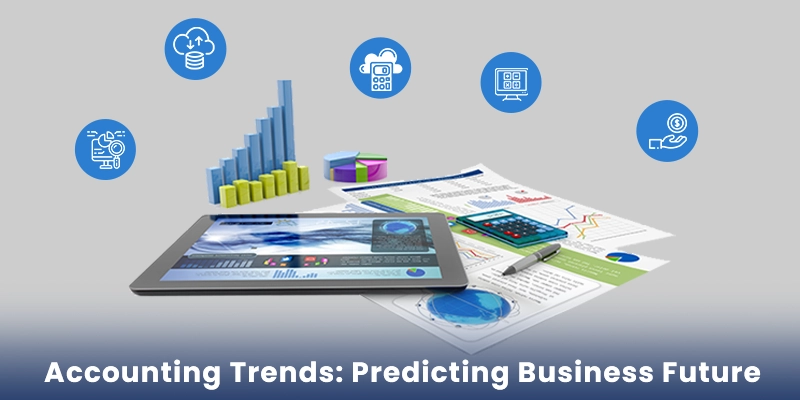Financial Forecasting Unlock Future Success
The ability to anticipate future financial outcomes is a cornerstone of sound business management. Financial forecasting serves as a vital tool that empowers organizations to make informed decisions, mitigate risks, and seize opportunities in an ever-evolving economic landscape. By projecting revenues, expenses, and cash flows, businesses gain a clearer picture of their potential future performance, enabling them to navigate uncertainties with greater confidence.

This proactive approach moves beyond simply reacting to current events; it involves a systematic process of using historical data, current market conditions, and future assumptions to predict financial results. Effective forecasting provides the clarity needed for strategic planning, resource allocation, and performance measurement, laying the groundwork for sustainable growth and profitability.

Without robust financial predictions, companies operate in the dark, vulnerable to unforeseen challenges and unable to capitalize fully on emerging trends. It's not merely an exercise in numbers but a strategic imperative that translates data into actionable insights, driving smarter operational and investment choices.

A well-executed forecasting process helps identify potential funding gaps, assess the viability of new projects, and set realistic performance targets. It allows management to stress-test their strategies against various economic scenarios, ensuring resilience and adaptability. Ultimately, mastering this discipline is critical for any organization aiming to achieve long-term success and maintain a competitive edge.

What is Financial Forecasting?

Financial forecasting is the process of estimating the financial outcomes of a business over a specific future period. Unlike budgeting, which sets a fixed financial plan, forecasting is dynamic, aiming to predict what will happen based on current information and anticipated conditions. It involves projecting various financial metrics, including sales, revenue, expenses, profits, cash flow, and asset requirements. The primary goal is to provide a reasoned estimate of future financial performance to guide strategic decision-making and operational planning. This predictive analysis allows businesses to prepare for potential challenges and opportunities, ensuring they are better positioned to meet their objectives.

The Importance of Financial Forecasting for Business Success
The strategic value of effective financial forecasting cannot be overstated. It underpins nearly every significant business decision, providing a critical framework for growth and stability.

Strategic Planning and Goal Setting
Robust financial forecasts are the bedrock of effective strategic planning. By predicting future revenues and costs, businesses can set realistic and achievable goals. Whether it's expanding into new markets, launching a new product, or optimizing existing operations, forecasts provide the financial viability assessment necessary to determine if strategic initiatives are sustainable and aligned with long-term objectives. They help leadership understand the financial implications of their vision, guiding the allocation of resources towards the most impactful areas.

Resource Allocation
Forecasting enables efficient allocation of financial, human, and capital resources. Companies can anticipate periods of surplus or deficit, allowing them to pre-emptively adjust spending, investments, or staffing levels. For instance, if a forecast predicts a significant increase in sales, a business can plan for increased inventory, production capacity, and hiring, preventing bottlenecks. Conversely, if a slowdown is anticipated, resources can be conserved or redeployed to minimize potential losses.

Risk Management and Mitigation
One of the most powerful benefits of financial forecasting is its role in identifying and mitigating potential risks. By projecting various financial scenarios—optimistic, realistic, and pessimistic—businesses can understand their vulnerabilities to market fluctuations, economic downturns, or operational disruptions. This foresight allows them to develop contingency plans, such as securing lines of credit, diversifying revenue streams, or building cash reserves, thereby enhancing resilience against unforeseen challenges.

Investor Confidence and Funding
Accurate financial forecasts are crucial for attracting and retaining investors. Lenders and investors rely heavily on a company's projected financial health to assess its creditworthiness and growth potential. A well-articulated forecast demonstrates a company's understanding of its market, its strategic direction, and its capacity for future profitability. This transparency and foresight build trust, making it easier to secure loans, equity funding, and other forms of capital necessary for expansion and innovation.
Operational Efficiency
Financial forecasting aids in optimizing day-to-day operations. By predicting sales volumes, companies can manage inventory more effectively, reducing holding costs and avoiding stockouts. Labor planning becomes more precise, ensuring adequate staffing without over-scheduling. Production schedules can be optimized, minimizing waste and maximizing output. This operational fine-tuning directly translates into improved profitability and a more streamlined business model.
Key Types of Financial Forecasting
Financial forecasting can be categorized based on the time horizon it covers, each serving different strategic and operational needs.
Short-Term Financial Forecasting
Short-term forecasts typically cover periods ranging from one month to one year. These are crucial for managing immediate cash flow, working capital, and operational planning. Examples include weekly or monthly cash flow forecasts, revenue projections for the next quarter, and short-term expense estimations. They help ensure liquidity, manage inventory, and make timely decisions regarding payables and receivables.
Medium-Term Financial Forecasting
Medium-term forecasts generally span one to five years. They are used for tactical planning, such as capital expenditure planning, product development cycles, and workforce planning. These forecasts help bridge the gap between daily operations and long-term strategic goals, providing a clearer view of financial performance over the next few years and aiding in the development of annual budgets.
Long-Term Financial Forecasting
Long-term forecasts extend beyond five years, often up to ten or more. These are essential for strategic planning, major investment decisions, and assessing the long-term viability of the business model. They project future market share, technological shifts, and large-scale capital investments, helping companies envision their future competitive position and potential for sustained growth.
Common Methods and Techniques in Financial Forecasting
Various methods are employed in financial forecasting, ranging from qualitative judgments to sophisticated quantitative models. The choice of method often depends on the available data, the forecast's purpose, and the level of uncertainty.
Qualitative Methods
These methods are used when historical data is scarce or unreliable, such as for new product launches or in highly volatile markets. They rely on expert opinions, market research, and intuition.
- Delphi Method: A structured communication technique, originally developed as a systematic, interactive forecasting method which relies on a panel of experts. Experts answer questionnaires in two or more rounds. After each round, a facilitator provides an anonymized summary of the experts' forecasts from the previous round as well as the reasons they provided for their judgments.
- Market Research: Surveys, interviews, and focus groups are used to gather insights into consumer behavior, market trends, and competitive landscapes, which then inform financial projections.
- Sales Force Opinion: Aggregating estimates from the sales team, who are often closest to customers and market conditions.
Quantitative Methods
These methods rely on historical data and mathematical models to predict future outcomes.
- Time Series Analysis: This involves analyzing past data points collected over time to identify patterns, trends, or cycles that can be projected into the future.
- Moving Averages: Calculates the average of a specific number of past data points to smooth out fluctuations and reveal trends.
- Exponential Smoothing: Similar to moving averages but gives more weight to recent data points.
- ARIMA (AutoRegressive Integrated Moving Average): A more advanced statistical model that accounts for seasonality, trends, and irregular fluctuations.
- Regression Analysis: This statistical technique examines the relationship between a dependent variable (e.g., sales) and one or more independent variables (e.g., advertising spending, GDP).
- Simple Regression: One independent variable.
- Multiple Regression: Multiple independent variables.
- Econometric Models: More complex statistical models that incorporate economic theories and multiple variables to explain and forecast economic phenomena or business performance.
- Scenario Analysis: Instead of a single forecast, multiple forecasts are developed based on different sets of assumptions (e.g., best-case, worst-case, most likely). This helps assess the range of possible outcomes and their financial implications.
- Judgmental Forecasting: While often seen as qualitative, it's also a common method where experienced individuals or teams use their knowledge and insights to predict future outcomes, especially for short-term adjustments.
Steps to Implement Effective Financial Forecasting
Developing a robust financial forecasting process involves several structured steps to ensure accuracy and utility.
- Define Objectives: Clearly articulate what the forecast is intended to achieve. Is it for cash flow management, strategic planning, or investor relations? The objective dictates the required level of detail, time horizon, and chosen methods.
- Gather Data: Collect comprehensive and accurate historical financial data (sales, expenses, cash flows) and relevant external data (economic indicators, market trends, industry benchmarks). Data integrity is paramount for reliable forecasts.
- Choose Methods: Select the most appropriate forecasting methods based on the objectives, data availability, and the nature of the business. Often, a combination of qualitative and quantitative methods yields the best results.
- Develop Forecasts: Apply the chosen methods to the collected data, making explicit assumptions about future conditions (e.g., economic growth rates, interest rates, competitive landscape). It's beneficial to create multiple scenarios (optimistic, pessimistic, realistic) to understand the range of potential outcomes.
- Monitor and Adjust: Financial forecasts are not static. Regularly compare actual results against the forecasts and identify variances. Understand the reasons for these discrepancies and use this feedback to refine future forecasts and adjust assumptions. This continuous feedback loop is critical for improving accuracy over time.
- Communicate Results: Clearly present the forecasts to relevant stakeholders (management, investors, department heads). Explain the underlying assumptions, methods used, and the implications for decision-making. Transparency builds confidence and facilitates alignment.
Challenges and Best Practices in Financial Forecasting
Despite its benefits, financial forecasting is not without its challenges. However, adopting best practices can significantly enhance its effectiveness.
Challenges in Financial Forecasting
- Data Accuracy and Availability: Incomplete, inconsistent, or inaccurate historical data can severely compromise forecast reliability.
- Market Volatility and Uncertainty: External factors like economic downturns, geopolitical events, technological disruptions, and rapid market shifts can make future predictions extremely difficult.
- Human Bias: Forecasters can unconsciously introduce bias, either overly optimistic or pessimistic, based on personal opinions or organizational pressures.
- Complexity: As businesses grow, the number of variables increases, making the forecasting process more complex and resource-intensive.
- Resistance to Change: Lack of buy-in from various departments or a reluctance to adapt strategies based on forecasts can hinder their practical application.
Best Practices in Financial Forecasting
- Regular Review and Updates: Forecasts should be dynamic documents, reviewed and updated frequently (e.g., monthly, quarterly) to reflect new information and changing conditions.
- Flexibility and Adaptability: Build flexibility into the forecasting model to allow for quick adjustments to assumptions and variables as circumstances change.
- Cross-Functional Collaboration: Involve multiple departments (sales, marketing, operations, finance) in the forecasting process. This diverse input enhances accuracy and fosters ownership.
- Leverage Technology: Utilize specialized financial planning and analysis (FP&A) software, business intelligence tools, and data analytics platforms to automate data collection, improve modeling capabilities, and reduce manual errors.
- Clearly State Assumptions: Document all underlying assumptions for the forecast. This transparency allows for easier understanding, review, and adjustment when conditions change.
- Scenario Planning: Always develop multiple scenarios (e.g., best-case, worst-case, most likely) to understand the range of potential outcomes and prepare for various possibilities.
- Focus on Key Drivers: Identify the critical drivers of revenue and costs for your business and concentrate forecasting efforts on these variables.
Conclusion
Financial forecasting is far more than a mere numerical exercise; it is a strategic imperative that illuminates the path to future success. By systematically anticipating financial outcomes, businesses gain the foresight necessary to navigate an uncertain world, make informed decisions, and allocate resources effectively. From setting ambitious yet achievable goals to mitigating unforeseen risks and attracting crucial investment, the practice of forecasting underpins almost every aspect of robust business management.
Embracing this discipline enables organizations to be proactive rather than reactive, transforming data into actionable intelligence. While challenges like market volatility and data accuracy persist, leveraging best practices such as continuous review, cross-functional collaboration, and advanced technology can significantly enhance the reliability and utility of forecasts. Ultimately, a commitment to sound financial forecasting empowers businesses not just to survive, but to thrive, adapt, and unlock their full potential in an ever-evolving economic landscape.